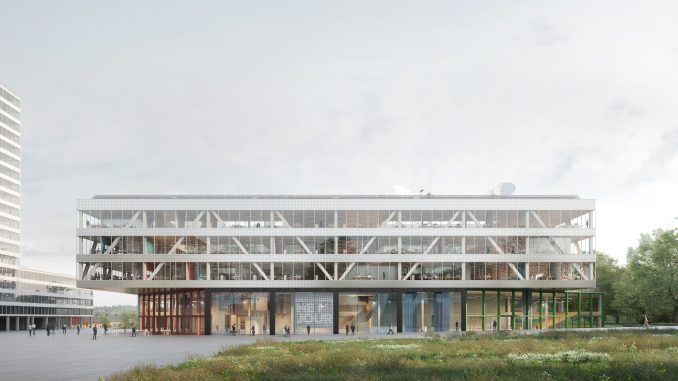
With over 180 employees, Loenhout, Belgium-based Vorsselmans is a renowned player in (facade) construction in Belgium, the Netherlands and the UK. The company has been familiar with projects in BIM since 2009. With the investment in HiCAD software, Vorsselmans is shifting to the next gear and aims to control production directly from the 3D model.
BIM has been a hot topic in construction for several years, says Joël Van den Broeck of Vorsselmans. "Our engineering and work preparation also gets involved in the BIM process in more than 80% of projects. In many cases, we call on external capacity to generate 3D models and our work preparation team 'translates' everything back into production drawings in our own software and Logikal. Double work, therefore, with the risk of errors. To organise these process steps as efficiently as possible, we started looking for software that could support us in this. That led to a renewed acquaintance with HiCAD."
Building a bridge
Vorsselmans did not take the choice lightly. "We have gone through several processes in the past, including with Revit. A wonderful design software, but less suitable for working things out at production and detail level," thinks Joël. In the end, Vorsselmans bridged ten years of searching for suitable software, which included a taste of HiCAD. "On reacquainting ourselves with HiCAD, we could see that serious steps had been made in terms of .ifc integration and that the software would allow us to bridge the gap between the 3D model and controlling production. This was the reason why we made the switch to HiCAD in mid-2023. With the additional ambition of further developing 3D modelling capabilities in-house."
VRT in Brussel
After an intensive training programme, Vorsselmans is now working on its first project in HiCAD. And they are tackling it right away, as it concerns the large-scale new building of the public broadcaster VRT in Brussels. "It will be designed entirely in 3D, with us being part of the construction team to help work out the facade," says Joël. "It's all custom-made and then you get stuck with software like Logikal, which is perfect for all standard system solutions." The experience with HiCAD to date has been positive. "The level of detail we want to get out to production level seems to go well, even with such a complex project as VRT. We do notice that the speed is not there yet, but that is logical. In the beginning, it's a lot more figuring out than we were used to. This does ensure that clashes and producibility are considered much earlier in the process and that ultimately benefits quality."
With HiCAD, Vorsselmans has deliberately embarked on a path to keep more BIM knowledge in-house and develop it further. "We notice that our younger colleagues are a lot more familiar with BIM, they want to model instead of 2D drawing. But also our older colleagues with all the knowledge and experience will eventually find that it can be done more efficiently. And that is where HiCAD has an important role to play."




